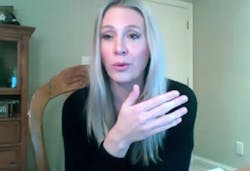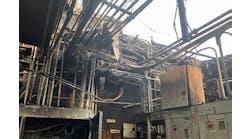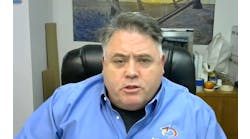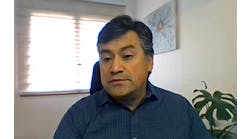Rockwell Automation, Microsoft team to simplify your work life
“We want to alleviate the burden of getting to the right data. We want to free the customer to think about what they can do with the information.” Tessa Myers of Rockwell Automation discussed a range of new software products co-innovated with Microsoft to make industrial practitioners more effective in their work.
Technically, the focus of the today’s Automation Fair At Home press conference was the benefit of edge-to-cloud technology being delivered via the expanding partnership between Rockwell Automation and Microsoft.
But quickly into the discussion between Tessa Myers, Rockwell Automation vice president of product management, and Sam George, Microsoft corporate vice president for Azure IoT, it became clear that this is more than a partnership between two companies; rather this initiative involves the wider ecosystem of stakeholders, from OEMs to system integrators, from data scientists to factory-floor managers, from software developers to business owners and everybody in between.
Rockwell Automation and Microsoft may be directing this production to optimize operations, but the end users—the customers—are the most important actors.
The backstory: earlier this fall, Rockwell Automation and Microsoft announced a five-year partnership expansion to develop integrated, market-ready solutions to help industrial customers improve digital agility through cloud technology. By combining each company’s expertise in the industrial and IT markets, respectively, teams can work together more seamlessly, enabling industrial organizations to save on infrastructure costs, speed time-to-value, and increase productivity.
The goal is to deliver innovative edge-to-cloud-based solutions that connect information between development, operations and maintenance teams through a singular, trusted data environment that enables development teams to digitally prototype, configure and collaborate without investing in costly physical equipment. This unified data environment also enables IT and OT teams to not only securely access and share data models across the organization, but with their ecosystem of partners as well.
“This partnership provides Rockwell Automation and Microsoft customers with a holistic, simple solution for IIoT development and operations and removes data silos that hinder industrial digital transformation initiatives,” said Rockwell Chairman and CEO Blake Moret at the time the partnership was announced. “By eliminating a core barrier to automation initiatives, industrial organizations establish a digital thread connecting the entire enterprise, which in turn accelerates innovation, maximizes productivity and optimizes operations.”
During today’s press conference, reps for the two companies further detailed this collaboration, the latest in more than two decades of fruitful partnership. “A little over a year ago we decided to engage in a co-innovation challenge,” explained Myers. “We wanted to explore what more we could do, together, to enable digital transformation for our industrial customers.”
The result of that exploration is the creation of FactoryTalk as a service offering, a cloud-based solution design to help streamline customers’ tasks in increase productivity. This offering is comprised of three sub-elements:
-
The Design Hub: Increasing design-time productivity to reduce time-to-market and mitigate risk. (This element launches early in 2021.)
-
The Operations Hub: Boasting simplified access to real-time data for analytics and cloud-based applications to drive operational efficiency.
-
The Maintenance Hub: Focusing on asset management and predictive maintenance, enabling performance and workforce productivity.
“We asked ourselves ‘How do we ignite and enable our ecosystem of partners, machine builders, system integrators, end users and service providers to help all of industry leverage technology to progress their efforts?’” said Myers.
It’s a lofty challenge. The partners are confident they can accomplish it.
“We see a new computer paradigm across industry,” said George. “Not just IIoT, but a true balance between cloud and edge efforts. We at Microsoft Azure come from the cloud, but not everything belongs there. You have workloads running on the edge and cloud. There should be a distribution of work between the two.”
This is customer-driven innovation, the two stressed throughout the press conference, emphasizing the motivation to simplify, simplify, simplify. Making it easier for OEMs to manage the insertion of smart-devices in their equipment. Making it easier for data scientists to develop insights from the data, rather than wasting time processing that information. Making it easier for end-users to configure all of their disparate programs to enable true optimization of all of their efforts.
“A common challenge for customers undergoing digital transformation is the large number of assets within legacy systems, which makes getting at data—consistently—difficult,” said Myers. “We want to alleviate the burden of getting to the right data. We want to free the customer to think about what they can do with the information.”
“Simplifying that journey is an amazing first step,” echoed George. “When customers gain that access, when they understand true efficiencies, that leads to new questions, which leads to improvements, that then leads to new questions.”
These partners are eager and able to provide answers. Summarized Myers, “We have very talented team members working on this collaboration, but we are always guided by customers—the challenges and needs they have. We engage with customers on what things are most impactful for them, and that helps guide us in this work. We are leveraging the domain expertise of Rockwell Automation and Microsoft, but we are guided by customers as we move forward on this journey.”
The editors of Control, Control Design and Smart Industry are providing coverage of Automation Fair At Home, bringing you breaking news, innovations and insights from the virtual event. Once Automation Fair At Home is over, the editors will put together an event report featuring the top news. Pre-order your copy today.





